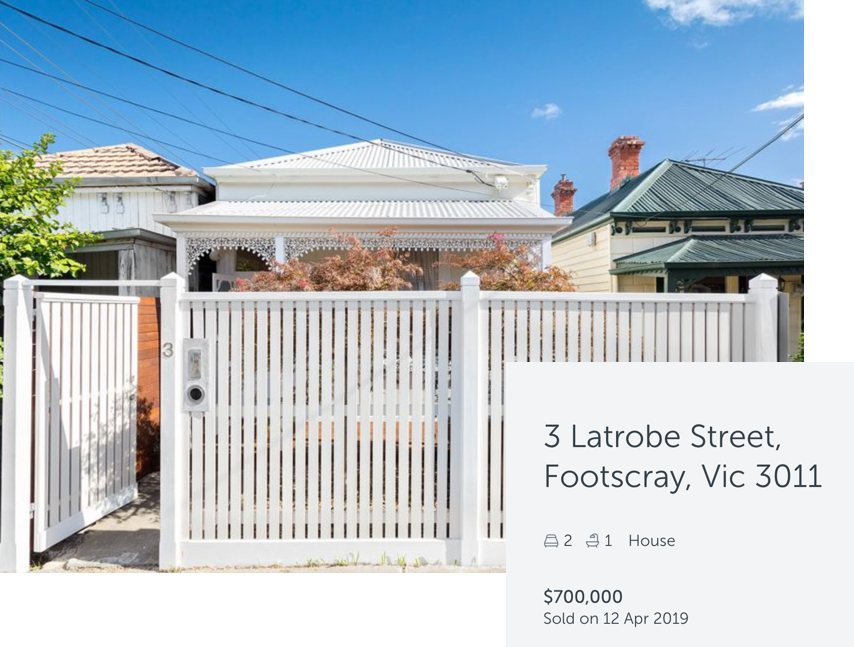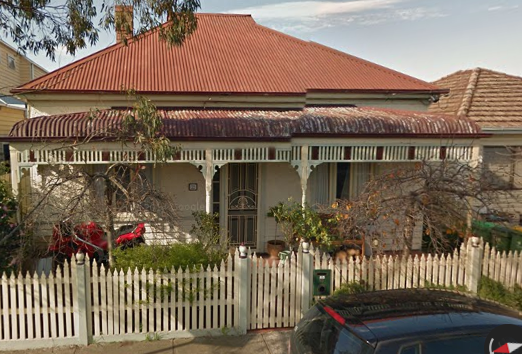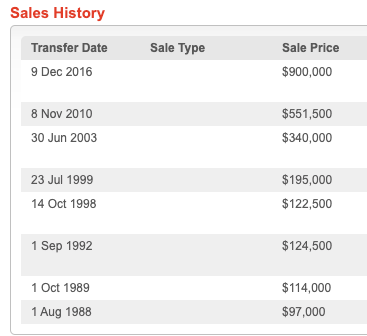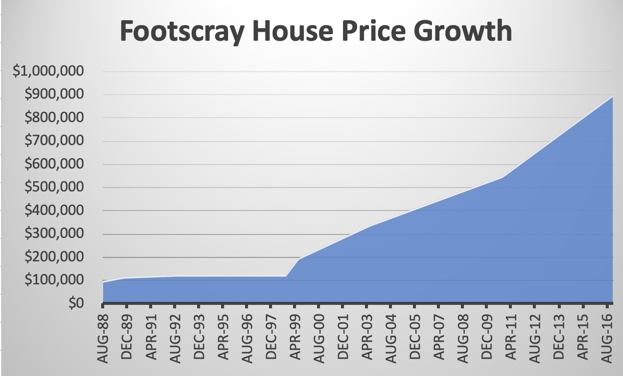Now that Melbourne’s dismal property market downturn is behind us and auction clearance rates have struck 80%, many property pundits are contemplating their missed opportunity and feeling despondent about the fact that they could have, (-but didn’t) purchase an investment property in the pre-election, buyer’s market conditions.
Taking this property as a case in point; past clients of ours purchased this Victorian cottage in Footscray in the final weeks leading up to the election. Negotiations were tough, and despite the agent’s determination to achieve a better result, the conditions didn’t permit and the property was secured for a bargain price.

In the space of just seven months, the house next door, (on the same land size and in slightly inferior condition) sold for $843,000.
Our client had made a ‘paper gain’* of just over 20% in little more than half a year. This is an incredible rate of growth, and while we were very excited about the opportunity it presented our clients in relation to a available equity for a subsequent portfolio purchase, we pointed out that the market doesn’t perform in a linear fashion, and the power of time will hold them in better stead than any efforts to time the market would.

If they were to adjust their wealth building strategy to that of ‘timing the market’, they’d face the challenges of pinpointing low and high points in the market, (which even professional buyers can’t genuinely claim to be able to do) and more so, they would strip the stamp duty, agent’s fees, marketing costs, vacancy rates, and capital gains tax obligations off any profits they’d managed to make on a good trade.
Trading in property is risky, difficult and often disappointing.
A recent negotiation of ours presents an interesting case study. Also located in Footscray, this double fronted Victorian house illustrates the power of time versus the flipping opportunity.

The sales data below dates back to 1988 for this house in Footscray, (pictured above). Unfortunately for us, the availability of pre-Torrens Title sales prices is limited on our system, although a paid title search can give us the visibility we sometimes yearn when we decide to look at long term capital growth trajectories throughout the Old Title system.

The owner who sold in 1989 could argue that their 17.5% gain in little over a year was fortuitous.
The subsequent owner’s 9.2% gain over the following three years was moderately disappointing, while the owner directly following them experienced a two thousand dollar loss over six years; a totally disappointing outcome by anyone’s measure. Interestingly, this period of ownership coincided with one The Asian Financial Meltdown and the Dot Com Bubble. The buyer who took the keys in 1998 enjoyed the most stellar rate of growth of all of these owners above, with a 59% gain in just eight months, or 7.2% growth per month.
This gain is more than double our earlier cottage buyer’s ‘paper gain’ of 20% in seven months.
The following owner enjoyed 74.4% growth over just four years, and even in the face the Global Financial Crisis in 2008, the subsequent owner still managed to reap a 62.2% gain over their seven year ownership period. The most recent vendor experienced a 63.2% price increase over six years of ownership, a slightly sharper rate of growth than that of the person they purchased from just following the GFC.
But had the original owner held the property for the entire 28 year period, they’d have enjoyed more than 1000% growth, and amassed an $803,000 gain.

And all of this is based on an annualised capital growth rate of 8.3%.
While Footscray has changed markedly in recent years through gentrification, infrastructure improvement, planning advancements and a wonderful explosion of a great cafe and food culture, the reality is that many suburbs have performed at, (and above) 8.3% pa over this same time period.
The reward is there for those who buy investment property in locations where growth drivers are strong and sustainable, and the benefit of a ‘buy and hold’ strategy addresses risk. Spread over a longer period of time, the risk of short term losses become less of a focus for a long term investor.
REGISTER TO OUR NEWSLETTER
INFORMATION
CONTACT US
1A/58 ANDERSON STREET,
YARRAVILLE VIC 3013
0422 638 362
03 7000 6026
CATE@CATEBAKOS.COM.AU
